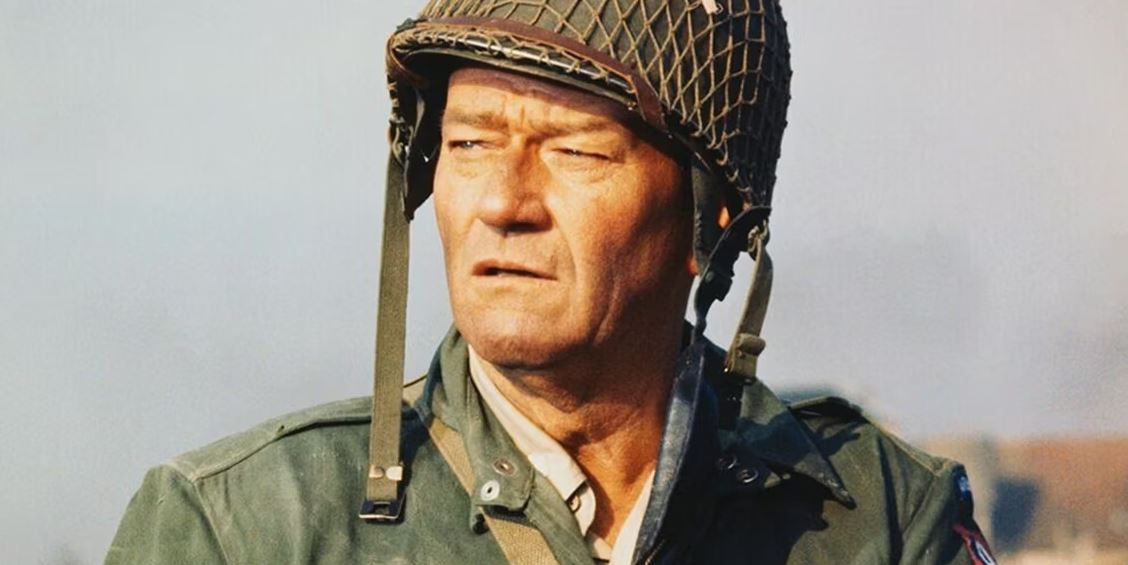Few battles in human history have been as viscerally captured on film as the storming of the beaches of Normandy by Allied troops in 1944. Some iconic documentaries come to mind, as well as recreations in classics like Saving Private Ryan and Band of Brothers (both with the involvement of Steven Spielberg). However, the film depiction of the event that is most effective in translating the scale and intensity of the battle, as well as the inner strategic and political mechanisms of it, remains the 1962 classic, The Longest Day.
‘The Longest Day’ Focuses On Both Battle And Behind-The-Scenes

There are lots of aspects that make The Longest Day such an iconic film. For one, it has an unbelievably stacked cast, featuring stars of the time like John Wayne, Henry Fonda, and Robert Mitchum at the forefront. Then there are numerous supporting characters, including a brief and surprisingly funny appearance from Sean Connery. But the most remarkable thing about the film is the way it draws the viewer into the time period by utilizing its 3-hour runtime to truly explore the intricate conversations of the various historical players involved in the build-up (and duration) of the battle. The first half of the film especially bounces between various generals, soldiers, and personnel as preparations are made, and these conversations not only provide a bit of a history lesson, but also establish the stakes of the coming battle. Additionally, they allow the viewer to get unique insight into specific tactics, like the parachute dummies that are utilized later on in the film.
The Scale Of The Battle In ‘The Longest Day’ Is Impressive
Some would argue, however, that a film like this that is focused on one central battle is only as good as that battle’s depiction, and in that respect, The Longest Day certainly also earns its stripes. The pay-off to the extensive conversation-based build-up is some of the most impressive, large-scale war recreations ever put to film. Sweeping shots, hundreds of extras, and astounding effects are just some of the methods used to truly communicate and translate the scale of the invasion to the audience. The cinematography is incredible (outside the mayhem of the battle, the title shot of a helmet in the foreground on the beach is quite iconic in its own right), and the film’s astounding production value alone makes it well worth watching.

The Scope Of ‘The Longest Day’ Is Equally Worthy of Note
While the scale of the battle in The Longest Day is dizzying, the general scope of the entire film is just as notable. As mentioned, the first half sets up lots of historical characters and their motives, thoughts, and tactics for the upcoming encounter, but as the film plays out, the way it swings between various players in the different areas of the chaos also helps to give the viewer a sense of how wide-ranging this day of the war was. Not only this, but it provides more emotional character-based moments that allow the viewer to connect more to what could otherwise just be a bird’s-eye-view battle film, with memorable sequences of soldiers working their way through the countryside, and one stand-out sequence that shows a paratrooper being caught on the top of a Sainte-Mère-Église church. The film’s ability to zone in on specific individuals while still communicating the massive magnitude of the entire battle is part of what makes it such a classic, and a must-watch for all war movie fans.
What makes The Longest Day such a perfect World War II (and specifically D-Day) film is not just how well it recreates the chaos and scale of the fighting itself, but also how it provides the appropriate and necessary context, and hones in on specific moments and people during the battle, in order to fully immerse the viewer.
